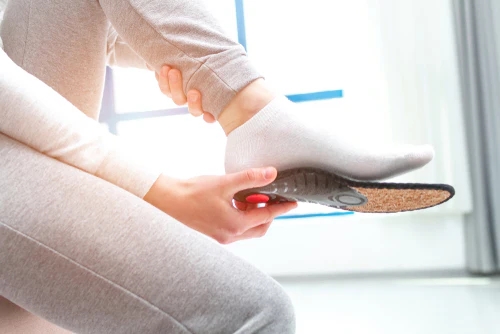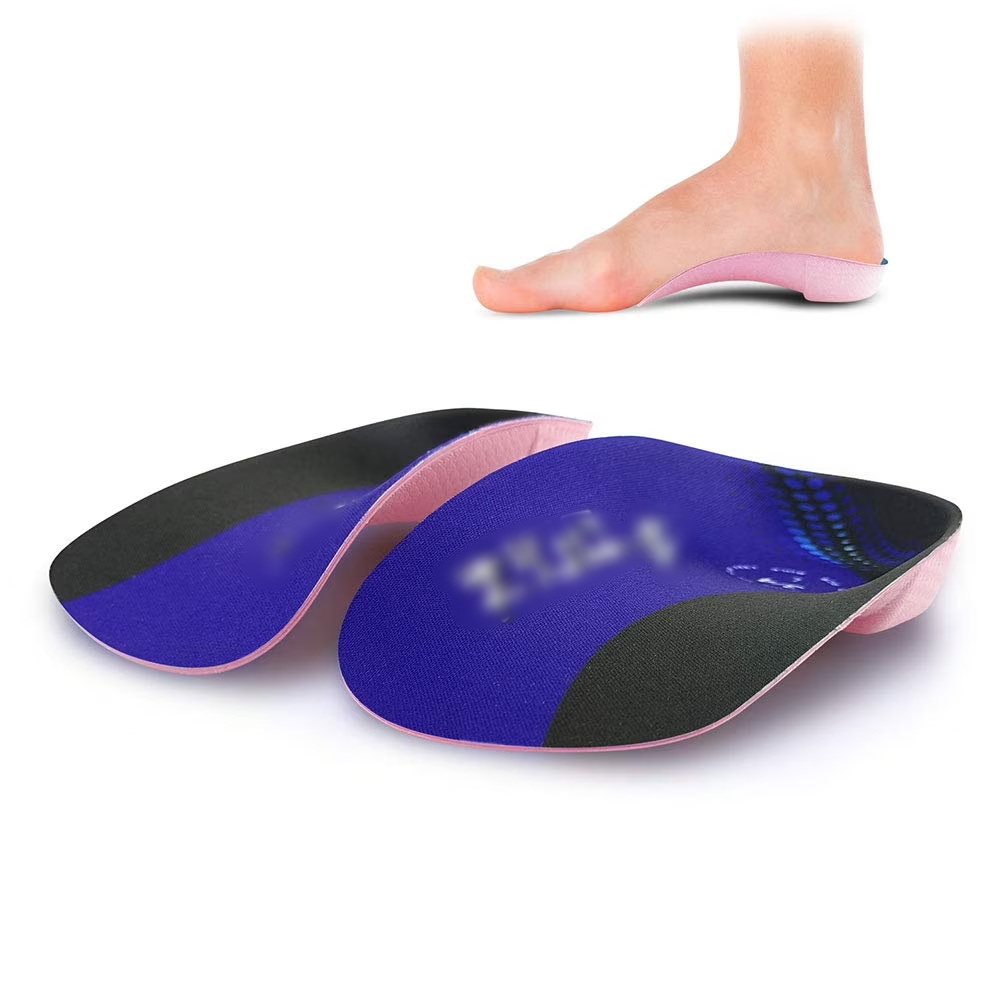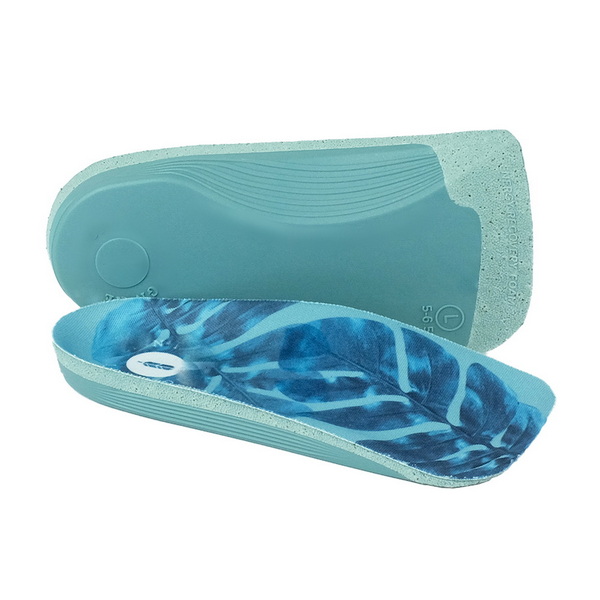










Content Menu
● Understanding Foot Arch Types
>> Biomechanics of High Arches
● Signs You May Need High Arch Insoles
● How High Arch Insoles Support Your Feet
● Lifestyle Advantages of High Arch Insoles
● Common Foot Conditions Linked to High Arches
● How to Identify Your Foot Arch
● Choosing the Ideal High Arch Insole
>> Durability
● Innovations from Leading Insole Manufacturers
● Custom vs. Off-the-Shelf Insoles
● Tips for Purchasing High Arch Insoles
● Steps for Using and Maintaining High Arch Insoles
● User Experiences: Testimonials
>> 1. How can I accurately identify if I have high arches?
>> 2. Can high arch insoles help prevent sports injuries?
>> 3. How often should I replace high arch insoles?
>> 4. Are custom orthotics necessary for all high arch users?
>> 5. Can high arch insoles improve daily comfort at work or home?
Do you ever experience foot fatigue, heel pain, or discomfort after a long day? If so, the real cause may not be your shoes, but your arches. Many people have high arches and do not realize how much this unique foot shape impacts comfort, mobility, and even long-term musculoskeletal health. High arch insoles are engineered to deliver personalized support and alleviate common problems for those with a more pronounced arch. In this article, learn how to determine if you need high arch insoles, their functional advantages, how to select the right type, and how top Chinese OEM insole manufacturers provide innovative solutions for global brands.

A high arch, medically known as pes cavus, describes feet with an elevated curve running from heel to toe. Unlike flat or neutral arches, high arches allow very little of the midfoot to touch the ground, resulting in concentrated pressure on the heel and forefoot. This foot structure is more rigid and less capable of absorbing impact, which can translate into pain and instability.
High arches can impact gait. A person with this type of foot tends to supinate, meaning their feet roll outward with each step. Supination increases stress on the outer foot and can contribute to ankle sprains, shin splints, and knee discomfort. Without proper insole support, the lack of midfoot cushioning can lead to an array of problems that affect daily performance and athletic ability.
Recognizing your foot type is crucial for choosing the best insole. Signs that you may benefit from high arch insoles include:
- Heel, forefoot, or toe pain after walking or running
- Visible high arch in the footprint or when standing
- Shoes showing excessive wear on the heel and toe areas
- Frequent ankle sprains or instability
- Difficulty finding comfortable footwear
If these symptoms sound familiar, upgrading your insoles could transform your quality of life.
High arch insoles fill the gap beneath the arch, providing a stable base and reducing stress on the feet. Lined with cushioned foam, gel, or EVA materials, the arch region helps distribute weight evenly, relieving pressure from the heel and ball of the foot.
With thicker padding in the heel and forefoot, high arch insoles absorb impact and reduce joint stress. This is especially important for athletes or those who stand on hard surfaces for extended periods.
By promoting proper alignment, high arch insoles help correct supination and balance the biomechanical load across the entire foot. This minimizes the risk of overuse injuries in the knees, hips, and lower back.
From commuting to shopping and standing at work, high arch insoles make a difference. By cushioning pressure points, they prevent soreness and fatigue, letting users sustain activity longer.
Competitive runners, tennis players, and gym-goers demand stability, shock absorption, and support. High arch insoles improve performance by maintaining foot alignment, reducing fatigue, and lowering injury risk.
Foot health impacts posture and movement, especially in later life. Proper insoles help older adults maintain mobility and independence, reducing falls and chronic pain associated with poor foot mechanics.
High arches are connected to several painful or limiting foot conditions. High arch insoles help prevent and address the following:
The plantar fascia, a band of tissue under the foot, often gets strained in high arches. Supportive insoles prevent overstretching and reduce inflammation.
Pain in the ball of the foot is common when arches do not absorb enough shock. Pad-boosted insoles relieve forefoot pressure for greater comfort.
Concentrated pressure in specific areas leads to callus or corn formation. Proper arch support spreads forces more evenly across the foot.
Athletes with high arches are susceptible to stress fractures due to insufficient impact absorption. Cushioning insoles mitigate this risk.

Assessing your arch type helps determine insole needs. The simple wet test is a reliable method: wet your feet, stand on paper, and observe the imprint. A narrow footprint with little contact in the midsection suggests high arches.
Other signs include:
- Persistent heel or forefoot pain
- Lack of arch flattening under weight
- Frequent instability or sprains
The best high arch insoles combine shock absorption and firm support. Popular materials include:
- Memory foam for plush comfort
- Gel for impact protection
- Lightweight EVA for durability
Insoles must match both foot shape and shoe type. For athletic shoes, choose slim yet supportive insoles; for work boots, opt for thicker cushioning. Many brands offer trim-to-fit designs for a customized experience.
Footwear that limits air circulation can cause sweat and odor. Modern high arch insoles feature moisture-wicking fabrics and perforations for enhanced breathability.
Insoles face daily wear and tear. Look for reinforced arch regions and resilient materials to extend lifespan, especially for high-use environments.
Modern insole manufacturers, especially OEM suppliers from China, continually enhance their products with advanced features:
- 3D arch mapping and ergonomic design
- Antibacterial surfaces for hygiene
- Dual-density foam layers for targeted support
- Eco-friendly materials for sustainability
These innovations make high arch insoles accessible, affordable, and compatible with a wide range of shoes.
Tailored to a specific foot shape based on a podiatrist's assessment, custom orthotics deliver precise support for severe high arches or chronic pain.
High-quality ready-made insoles address mild to moderate arch issues. Many now offer adjustable arch pads and modular designs for a semi-custom fit.
- Assess your foot using the wet test or a footprint measurement tool.
- Choose insoles made for your activity—sports, work, or daily walking.
- Test the fit in-store by walking around and evaluating comfort immediately.
- Review the return and warranty policies to ensure risk-free purchasing.
- Replace insoles regularly for best results.
1. Remove the old insole from your shoe.
2. Insert the new high arch insole, trimming edges if needed.
3. Try walking indoors to ensure proper fit and comfort.
4. For maximum benefit, wear the insoles consistently.
- Wash insoles with mild soap and let them air dry.
- Avoid direct sunlight or high heat when drying.
- Rotate between pairs to extend their lifespan.
Many people who switched to high arch insoles report life-changing results:
- “After years of sore heels at work, high arch insoles finally gave me lasting relief and let me stand all day comfortably.”
- “As a runner with high arches, I struggled with frequent injuries. Quality insoles helped eliminate pain and pushed my performance further.”
- “My old shoes felt uncomfortable, but after switching to specialized insoles, my feet feel supported and less fatigued.”
If pain persists despite using appropriate insoles, or if you notice swelling, numbness, or persistent discomfort, visiting a podiatrist for professional advice is essential. Some high arch conditions may require medical intervention or prescription-grade orthotics for proper care.
High arch insoles are an essential solution for anyone eager to resolve discomfort, improve athletic performance, and protect long-term foot health. Whether you're an athlete, a busy worker, or simply someone interested in optimum comfort, finding the right insole transforms each step. With innovations from leading manufacturers, it's easier than ever to find a product that adapts to your lifestyle and keeps your feet feeling great every day.

The wet test is the simplest method. Wet your foot, step on a piece of white paper, and observe your footprint—a high arch leaves a narrow print with minimal midfoot contact. You may also notice persistent forefoot or heel pain and shoes that show uneven wear.
Yes, they provide support that minimizes excessive supination, absorbs impact, and stabilizes foot alignment, reducing the risk of injuries such as ankle sprains, shin splints, and stress fractures.
For everyday use, replacements every 6 to 12 months maintain optimal cushioning and hygiene. Signs of wear, flattening, or odor indicate it's time for a new pair.
Not always. Severe cases or ongoing pain may benefit from custom orthotics, but most people experience significant relief and support from premium off-the-shelf high arch insoles.
Absolutely. Besides sports, these insoles cushion the feet during standing or walking, making long hours at work, home, or during recreation much more comfortable.